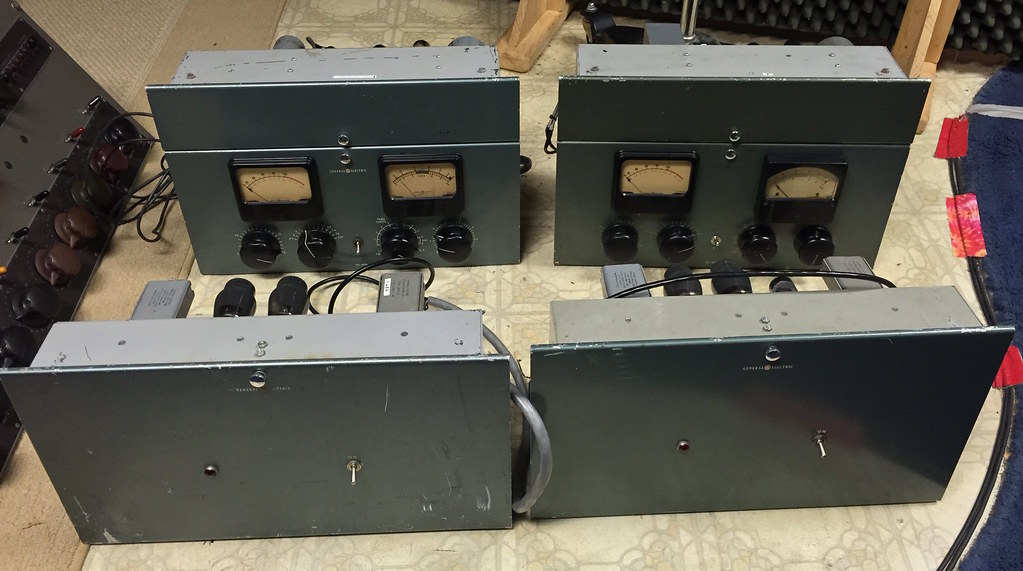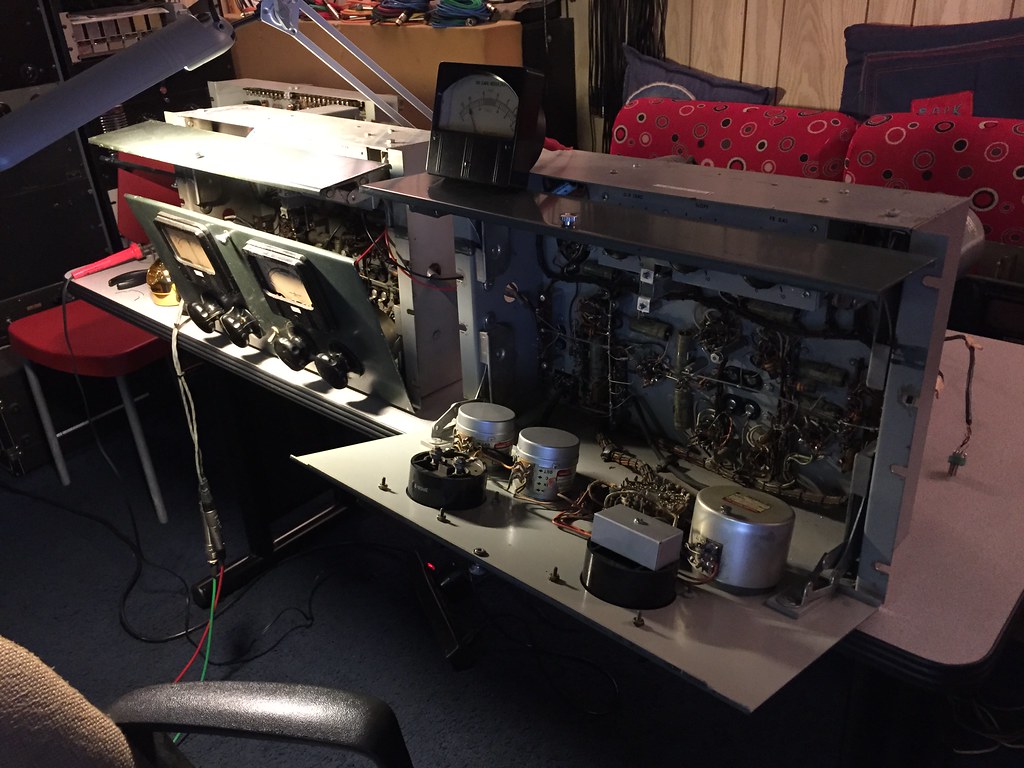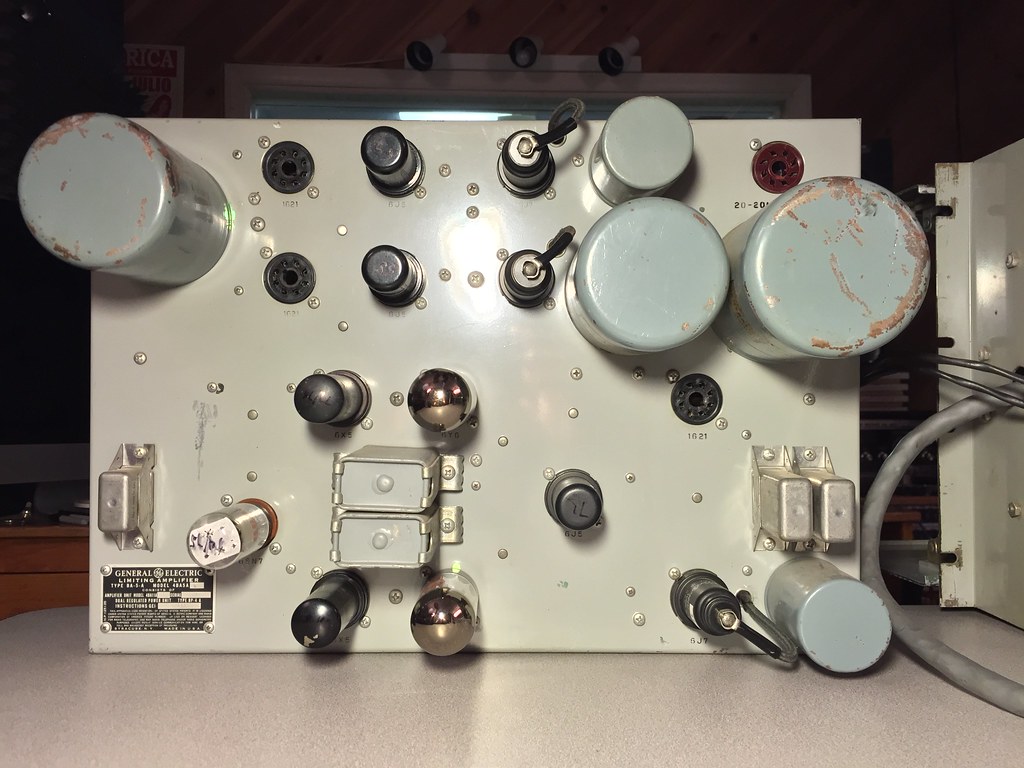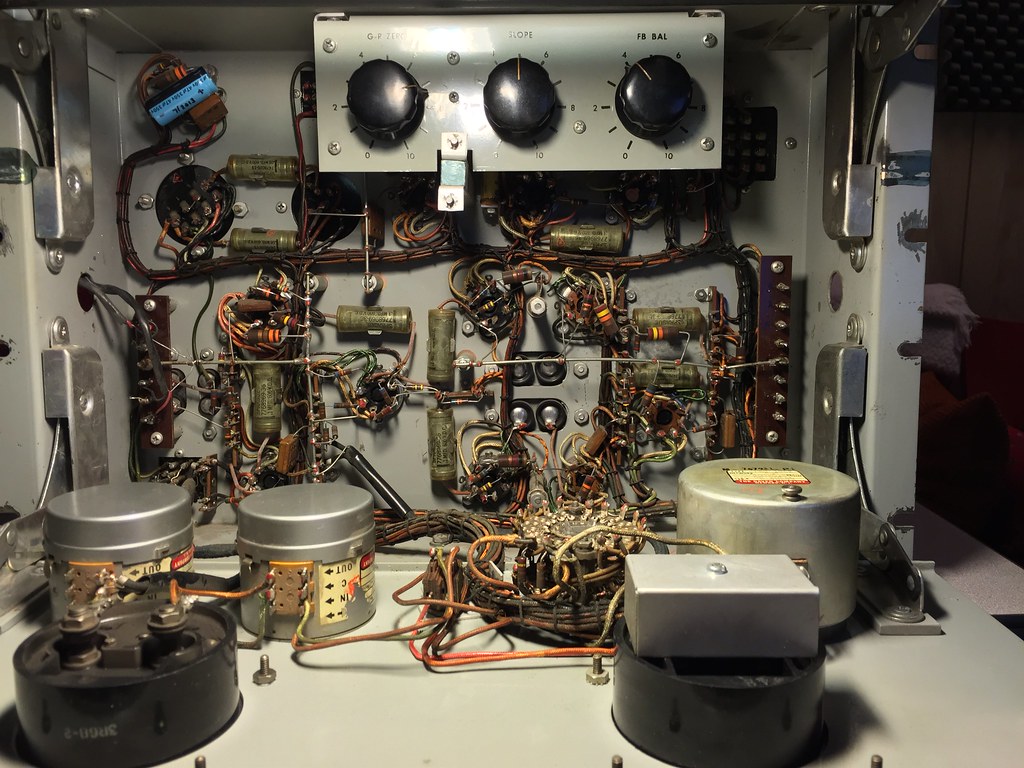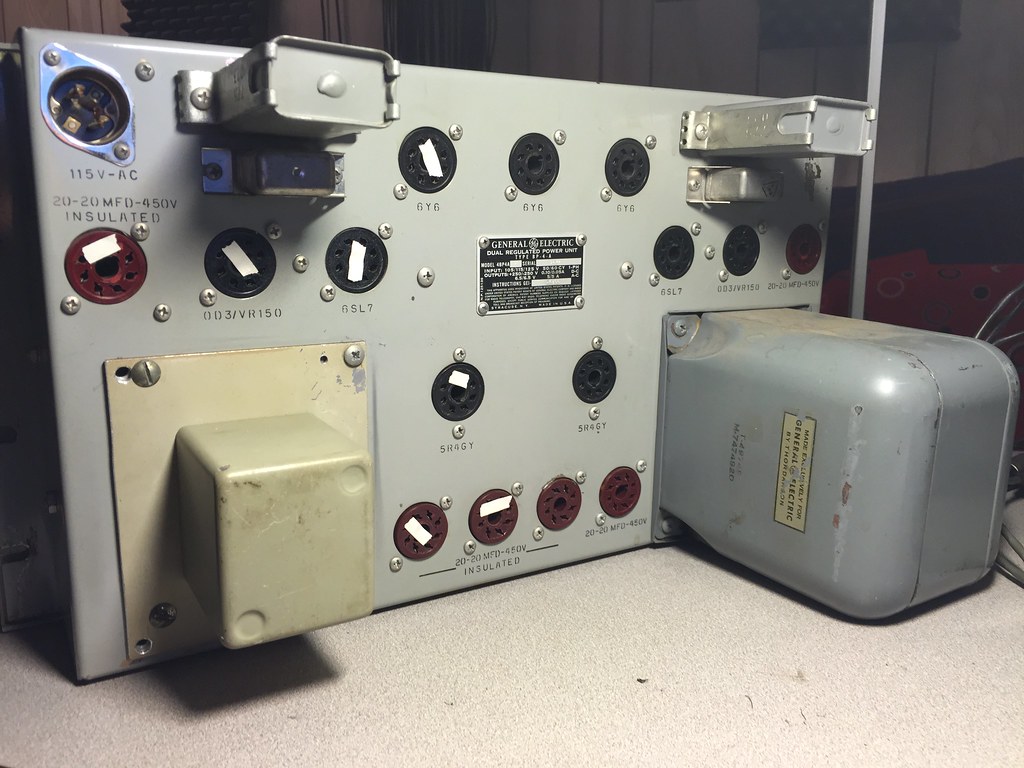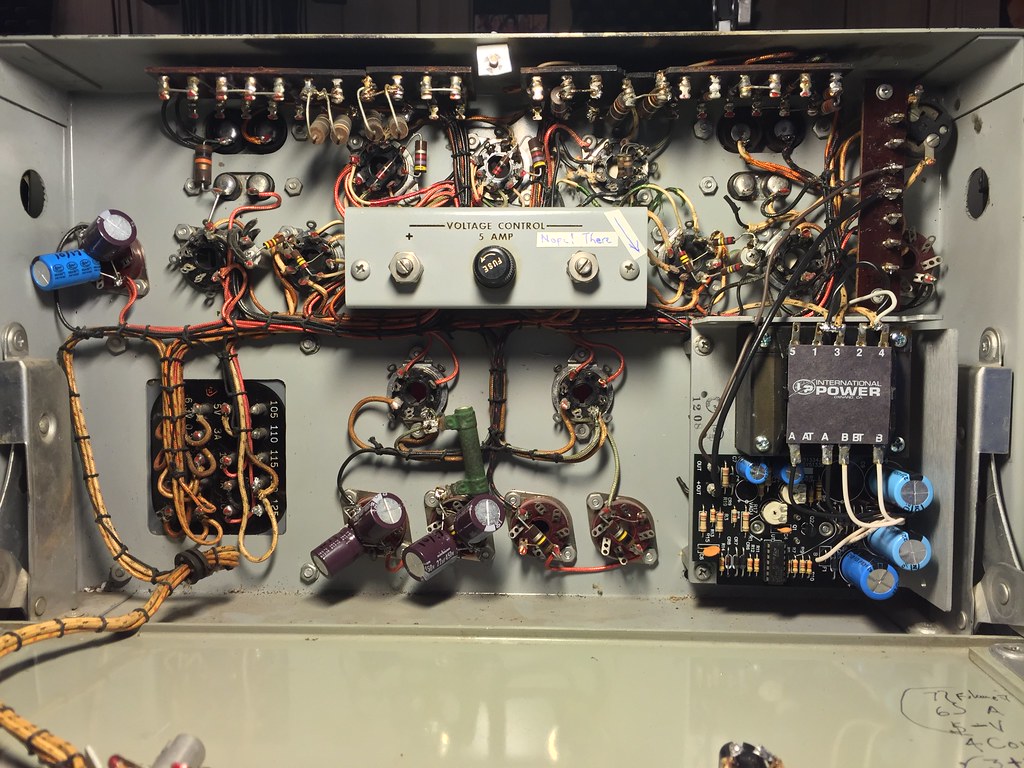Ok.....almost 11 years since the last post.
I've belatedly (sorry) finished going through a pair of these, and they are pretty cool sounding.
No slouches in General Electric Engineering dept, I can't think of anything else in tube audio electronics that called for a bipolar 250V PSU, looking at tubes with their plates connected to ground and -250VDC fed through resistors to cathodes will mess with your head. Massive external dual tube regulated PSU feeding an amp with 14 tubes, and only a single electrolytic in the amp on the +250VDC side, none at all on the -250VDC side. 23 total tubes for mono, in 13RU and around 80 lbs.
The super comprehensive DC current meter (30 microamps) will check B+ and B-, most of the tubes, balance match of the 6J5 feedback pair, and gain reduction.
Using it along with the VU, which can look at signal before and after the gain reduction amp, you can get comparative gain reduction readings on 2 different scales, which confirms you've aligned it correctly. If it's not aligned correctly, the GR meter will tell you it's doing something when it's not doing much at all.
These things are damn flat for 1945, both examples are within a dB or so from 20-30K, audio going through 4 audio transformers and one all-pass filter.
Thordarson transformers too, so frequently maligned as inferior. No, they definitely aren't. 1940's Collins Radio gear with Thordarsons also measures at higher bandwidth than many competitors.
That input transformer for the gain reduction amp: also rarely seen, a 600:600 feeding PP tube grids.
Really meaty and hi-fi sounding. None of the smush of a vari-mu....since it isn't one. Reminds me of the other feedback tube limiters I've heard, Collins 26-C being one. Differs with the all pass filter creating instantaneous limiting, and the multiple time constant means it really doesn't pump like a vari-mu. I tried altering the time constant to see what would happen, and it was nothing good.
The input control is more precise than most tube limiters, (30) 1dB steps.
The output control is interesting, these are meant to hit a very specific +12dBm output level with limiting calibrated as designed, so the range is 9dB total in 0.2dB steps. I haven't seen a Daven control so fine in detail anywhere else. It does not affect compression in any way, so as the manual states, effectively a vernier control for max output.
There's an interesting story I tend to believe, that at least one NBC owned high power station used this, with all other equipment being RCA ( mandated, naturally), though the GE was repainted and rebranded RCA to avoid scrutiny from visiting corporate types.




































